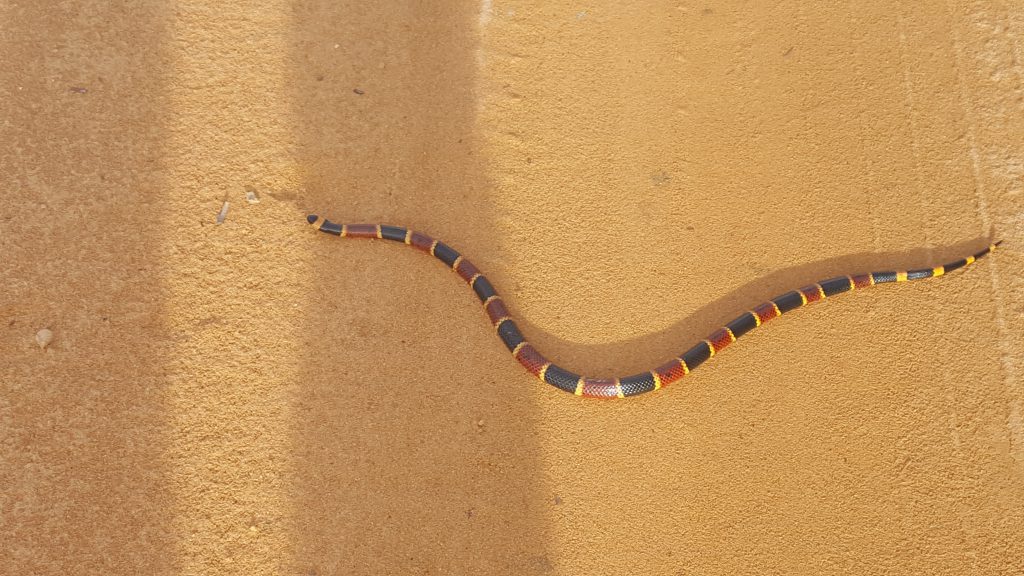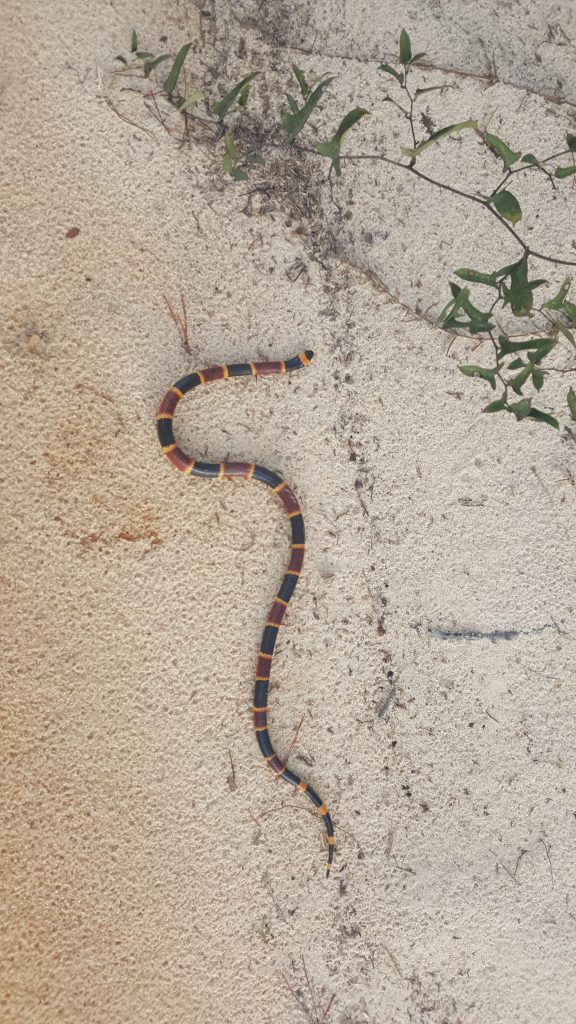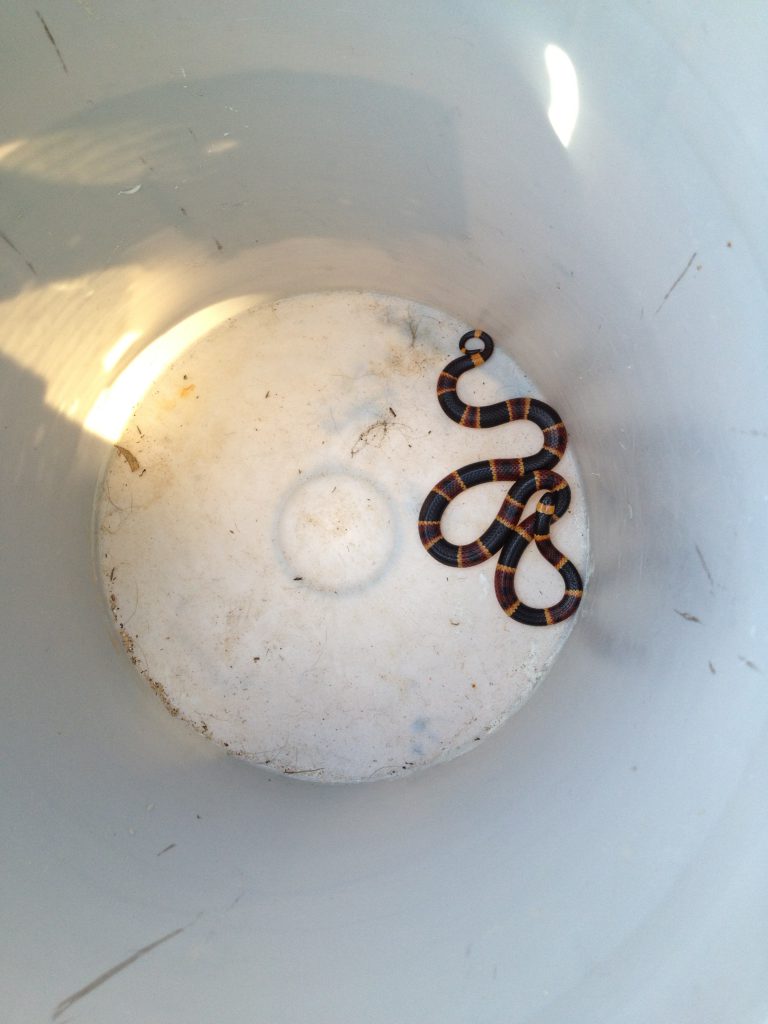Most of you – okay… ALL of you who read this column like the outdoors. Some like it for its peace and beauty, some for recreation opportunities, some like it for both. One activity I have found many enjoy is seeking creatures from a list. A sort of “bingo” approach to observing nature.
For many, they have a list of birds they would like to see. I have a colleague who wants to see each species of turtle in the U.S. in the wild. I heard of a group that was trying to photograph a selected list of turtles in the wild. I have a list of animals I hope to see while camping out west. It is a lot of fun to do. Many like the challenge.
I am not sure how it started, but earlier this year I began asking people to report snakes they see while out and about. Again, it started as just a list but then I decided to see how many of the 40 species and subspecies that call the Pensacola Bay area home we might find in one year. The challenge was on.
I broke the types of snakes into size categories following a guide published by Dr. Whit Gibbons and others. In our area there are seven species of small snakes, eight species of mid-sized snakes, seven species of large snakes, 13 species of water snakes, and four species of venomous snakes. There is one species of introduced snakes. Here are the results so far –
| Category | # Known species | # Seen |
| Small snakes | 7 | 0 |
| Mid-sized snakes | 8 | 3 |
| Large snakes | 7 | 5 |
| Water snakes | 13 | 5 |
| Venomous snakes | 4 | 3 |
| Introduced snakes | 1 | 0 |
Seeing no small snakes makes sense… they are small and are mostly nocturnal.
Seeing most of the large snakes also makes sense… they are large and easier to notice.
Not seeing a lot of water snakes also makes sense. First, you have to spend a lot of time on our rivers and lakes to see them. Second, they are not easy to tell apart. That said, we have seen almost half.
It is interesting we have seen three of the four venomous snakes. Cottonmouth encounters are quite common, but the two species of rattlesnakes (pygmy and eastern diamondback) are not. But… the one that is missing… is the eastern coral snake.

Seeing a coral snake is actually a rare thing. I bet if you asked 100 people “how many of you have seen a live coral snake in the wild?” very few would reply yes.
Why so few encounters?
Is this species declining?
I personally have only seen only two corals snakes in the wild in my life. Three if you count the time my dad said I was playing with one in the first grade – but I do not remember that. The two I saw were both at the Naval Live Oaks section of the Gulf Islands National Seashore near Gulf Breeze.
The first was when I was a Boy Scout camping there in the late 1960s. We came across the snake coiled around the base of a palmetto. We all knew what it was and did not get close, but all enjoyed watching it thinking how lucky we were. I remember how docile it was. No angry rattle. No nasty gaping white mouth. Just chillaxing and enjoying the day. Being boys, we had to see it move. We got a stick and nudge it. It just looked at us as if to say – “What are you doing? You know who I am? You know what I can do?” We left it alone, but it was an amazing experience.

The second encounter was also at Naval Live Oaks, but many years later. I was conducting a box turtle survey within the Seashore and following a transect I had set to search. I was moving slowly, looking hard, when I heard to some rustling in the leaves to my right. The type of rustling you hear when an armadillo is moving nearby. But there was no armadillo. I continued to hear the noise and searched for a small mammal when I realized it was coming from beneath the leaf litter. Using my hiking stick, I moved the leaves to find a large coral snake crawling. You can imagine my excitement. At this stage of my life, I had been a science educator for a long time and had taught about these snakes a lot, but only had seen one in my life.
The eastern coral snake (Micrurus fulvius fulvius) is found across much of the coastal southeastern United States. There are records in Florida, Georgia, South Carolina, North Carolina, Alabama, and Mississippi. They do seem to be more common in Florida than other states. They can easily be recognized by their classic red/black/yellow banded colors. There are mimics who have this coloration but the old song “red on yellow will kill a fellow” does work with this subspecies. Also, the mimics in our region have red heads, where the eastern coral has a black one. The literature states they prefer dry sandhill environments but can be found in hardwoods (which where I found them) and wet flatwoods dominated by pines.
The best chance to find one is in the spring and fall and most often found during or after rain. As I found, they spend most of their time beneath the ground or under leaf litter but when they do move above ground, they seem to prefer mornings.

Their food of choice are lizards and snakes. They will grab their prey and chew releasing the venom. They do have their predators. Kingsnakes, notorious for eating other snakes, are one, but indigo snakes, and black racers will also consume them. When they encounter a potential predator their first response is usually to try and hide underground. If this does not work, they will flatten their bodies hiding their heads beneath a coil and sometimes raise their tails to appear as the head end. As I observed, they are not terribly aggressive snakes but anyone seeing one should keep their distance.
Coral snakes have a neurotoxin, different than the hemotoxins find in the pit vipers. They are more closely related to sea snakes and cobras, who have a similar toxin. Deaths from this snake are rare, but encounters and bites are also rare.
Do I encourage you seek out this snake for our project?
No… The bite from this animal can be very serious. Though the majority of venomous snake bites come from copperheads, and most fatalities from western diamondback rattlesnake, this is NOT a snake to mess with. If you do see one, let us know and consider yourself lucky. But keep a safe distance. It is amazing to see one.
- Rattlesnakes on Our Barrier Islands; Part 4 – Thermoregulation - December 29, 2025
- Rattlesnakes on Our Barrier Islands; Part 3 – Envenomation - December 22, 2025
- St. Joe Red Tide Claiming Terrapins - December 15, 2025
